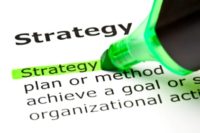Safety Today is one of the largest full service safety equipment distributors in North America. As such, we have helped many companies harmonize the relationship between safety and savings.
Employers looking at the bottom line and finding too much reactive spending on safety with little improvement in injury rates have a challenge: How do they ensure that safety equals protection and that protection equals savings?
We advise our customers to ask good questions about accident prevention and total savings. Then, we can use our expertise to lend a hand in uncovering program savings that would otherwise remain hidden.
Here are the questions we encourage a proactive-minded customer seeking our counsel to ask as we begin to work together to reduce the total cost of safety.
1 - How do I measure the total cost of safety in customer’s plants?
The amount of money spent in the U.S. on accidents — everything from actual medical treatments and lost time, to hiring replacements, training, lost productivity, health insurance costs, workers’ compensation, legal costs, and other expenses — substantially exceeds $100 billion a year. Contrast that against the $5.5 to $6 billion annual revenues of the North American safety equipment industry and you can easily see that the cost of accidents far outweighs what is spent to prevent them.
For every plant we call on, we help them to appreciate that we are going to reduce their share of the $100 billion total cost of workplace accidents. We may invest in some areas while lowering costs in others. Ultimately, the real savings are found in reducing the number of accidents.
When customers can’t readily account for the total cost of safety, Safety Today helps comb through data to uncover less obvious business costs — such as training expenses and productivity dips related to accidents. This data will provide a benchmark for the program moving forward. Our forensic team is better than most at gathering empirical data related to accidents because, as dedicated safety experts, that is how we get to the facts to pinpoint lasting solutions.
2 - You work with many customers across North America. What best practices can you share to make customers safer?
Our customers know their businesses, but we know safety. We are expert at developing worker protection programs and we encourage customers to put our experience to work.
For example, if we are trying to create a total savings program for a manufacturer of air conditioning components, we can apply experience gained from having provided complete safety programs for major manufacturers in that same market. No sensitive or confidential information is ever shared, just a wealth of understanding amassed from our 60 years working in plants similar to the one we are evaluating.
That said, dissimilar experiences can also prove vital. When no one else has considered doing something a certain way in a given industry, sometimes the best practices we’ve learned from a non-competing marketplace can create instant value.
3 - How can I reduce my customers’ total cost of PPE per employee, yet keep them safe?
Look at the total cost of PPE versus simply how much the PPE costs. Safety Today begins by conducting a complete plant survey. The survey is a front-to-back study of work environments, hazards present, past accidents, potential accidents, and PPE selection and usage.
The survey includes product testing and performance evaluation. This testing includes bringing in product at different performance/value points that provide a variety of degrees of protection, and compares them to product purchased based on price alone. For heavy use categories such as gloves, we can often prove a 5-10x increase in product life with a 2-4x increase in cost.
4 - Aside from the obvious—buying higher quality products—what can I do to increase the life of customers’ PPE?
We work hard to produce savings, then we make sure the results stick.
Safety Today has exclusive partnerships that provide laundering and reconditioning services for the PPE we sell. A $6 glove thrown away after a single day because it is soiled can be laundered and reconditioned for less than a $1.
After gloves leave your facility, carefully tagged so that no mix ups or switched deliveries occur, they are placed in a shaker to remove metal chips and other foreign matter, then sorted by material type for either dry cleaning or water washing. After a thorough cleaning, we then sort for style and size and repair damaged gloves. Reusable, cleaned, and repaired gloves are counted, bundled and labeled for return to your facility.
5 - How can I get customers’ employees to take better care of their PPE?
We provide training programs that encourage employees to appreciate the investment in PPE. The programs are geared at minimizing waste, encouraging compliance, and, most important, educating employees to work more safely.
Vending programs create value by helping customers manage inventory — in fact, it is not uncommon to see total program savings in excess of 30 percent when an open PPE distribution system is modified and augmented with vended product.
The system helps govern usage because employees know that there is a system in place that monitors and tracks PPE use and reports possible carelessness.
Using the customer’s data, Safety Today helps plants determine first, if their conditions are right for vending and then, if appropriate, we develop the system components to address distribution and control. Plus, we are one of the few companies that can provide all vending equipment, including installation, service, and refill services.
Another popular option for controlling inventory is our development of various PPE kits. Kits get employees accustomed to the idea that PPE is to be used for a designated life cycle.
6 - How can I better work with purchasing to make sure total safety costs are understood relative to individual PPE costs?
A facility analysis by a safety professional can offer real cost savings, both in injury prevention and inventory reduction. But our recommendations work best when safety directors, procurement specialists and production management work together to introduce the new program and implement the change. We bridge the gap by developing an integrated relationship between safety, purchasing, manufacturing and the outside safety consultant from the very start.
Safety Today's strategy: Safety program cost reduction


